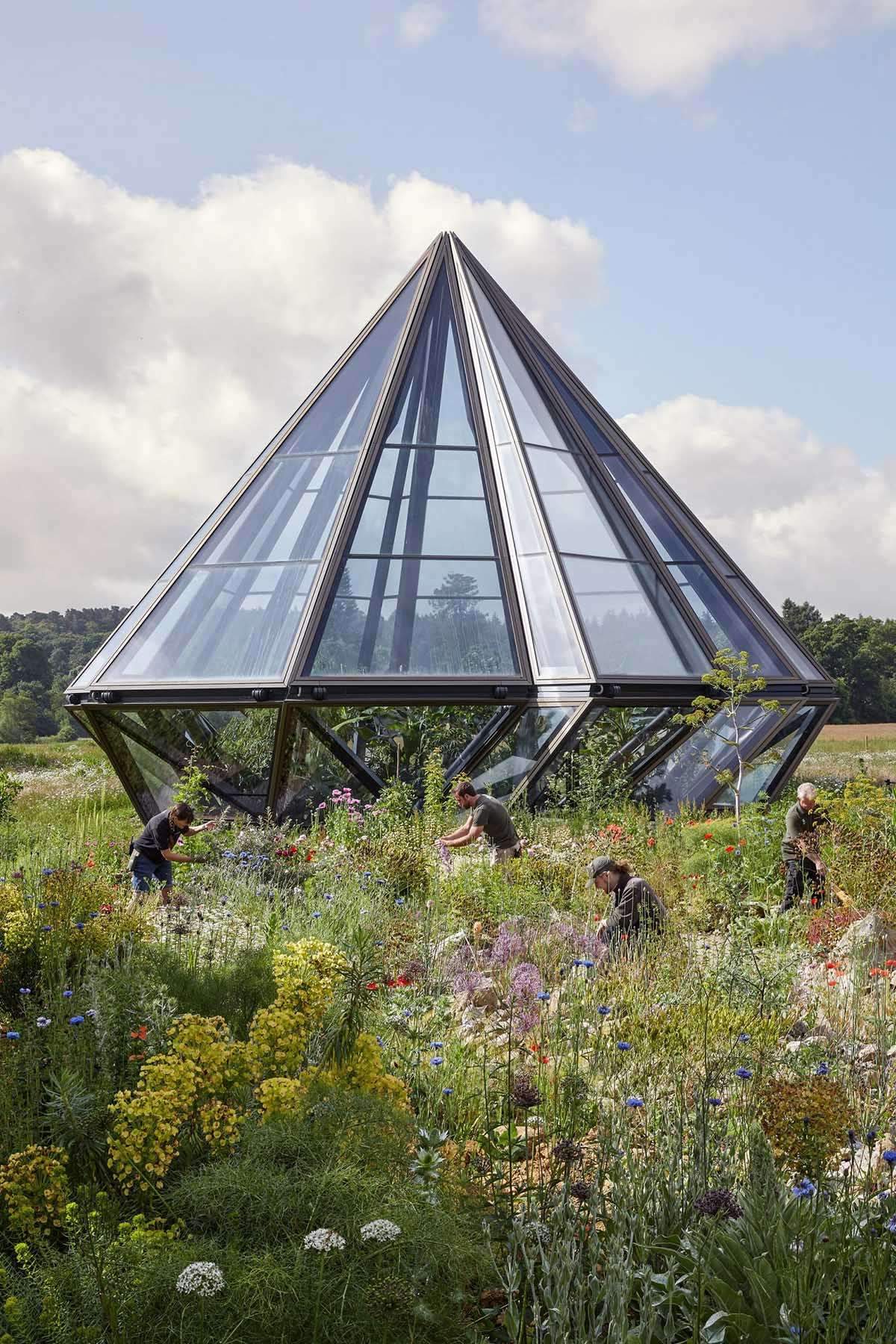The British firm Heatherwick Studio has designed a kinetic and sculptural glass house in collaboration with
The Woolbeding Charity and the National Trust at Historic Woolbeding Gardens, part of a historic property in West Sussex, UK.
Design Features
The house measures 141 square metres, and has been named the Glasshouse,
a structure that unfolds to be the new focal point of a new garden that underscores how much the ancient Silk Road influenced English gardens today.
Thanks to its kinematic mechanism, the Glasshouse features ten steel “spalls” with a glass and aluminum façade
and takes four minutes to open and displays an enormous variety of subtropical species.
At first glance, the structure begins like a jewel, and once opened, resembles a crown,
and to create this sculptural object, Heatherwick Studio drew inspiration from the spirit of Victorian terrariums.
The studio combines aesthetic features with sophisticated engineering to be able to provide a functional and protective shelter,
while at the same time providing a deceptive decorative element to the new Silk Road Garden.

Literally a project
Step through this charming beautiful garden and discover something that begins like a jewel and ends like a crown,
as the Glasshouse slowly opens.
The Silk Road Garden surrounding the Glasshouse takes visitors
on a 12-step journey through a landscape influenced by the ancient trade route between Asia and Europe.
Goods such as the silk that bears his name were exchanged along
which many types of plants were brought back to Britain for the first time, such as rosemary, lavender and fennel.

Visitors follow a winding path to navigate through more than 300 species and twelve distinct regions of the Silk Road.
From a Mediterranean green, visitors can enjoy a rare variety of Mullein (Verbascum sp.)
grown from a seed brought here by a friend from Woolbeding Gardens, to the richly scented Gallica roses,
which are now very popular in England but were originally introduced to Europe by Merchants from Persia.
The Glasshouse protects a fascinating and rare specimen of Aralia Vietnamensis,
providing shade for a group of delicate ferns that grow alongside canopy trees, magnolias and bananas.

Glasshouse represents the cutting edge of technical design and engineering
The erection of plants in subtropical southwest China at the end of a path that traces the steps along the Silk Road,
from temperate Europe and through mountains, arid lands, and high grasslands,
is an outstanding achievement in contemporary design.
Plants were brought from their native Asia to define much of the richness and glory of horticulture in England.
Joining the William Bay watercolor and the noble neoclassical folly of Philip Gibb,
both of which are monuments to the great fallen trees they have succeeded,
Heatherwick Glasshouse and the new Silk Route Garden bring more joy, beauty,
and delight to all who come there, and that what Disraeli called “the most beautiful valley in Earth”.

On warm days, the Glasshouse opens its “sepalates” using a hydraulic mechanism to allow plants access to direct sunlight and ventilation.
In cold weather, the structure remains closed,
providing shelter for a range of subtropical species.
The hydraulic mechanism of the structure was achieved by London-based engineering firm Eckersley O’Callaghan,
which then uses hydraulic cylinders to move the cables around their hinges.

Glasshouse joins a water feature designed by British sculptor William Pye and a neoclassical noble folly by British architect Philip Jebb.
For more architectural news


 العربية
العربية
Pingback: MAD establishes its first social housing project in Beijing - ArchUp